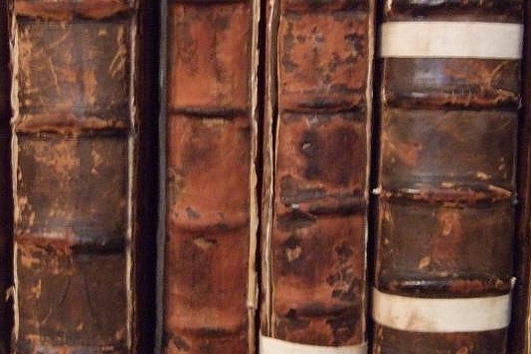red rot on:
[Wikipedia]
[Google]
[Amazon]
 Red rot is a degradation process found in vegetable-tanned
Red rot is a degradation process found in vegetable-tanned
 Red rot is a degradation process found in vegetable-tanned
Red rot is a degradation process found in vegetable-tanned leather
Leather is a strong, flexible and durable material obtained from the tanning (leather), tanning, or chemical treatment, of animal skins and hides to prevent decay. The most common leathers come from cattle, sheep, goats, equine animals, buffal ...
.
Red rot is caused by prolonged storage or exposure to high relative humidity
Humidity is the concentration of water vapor present in the air. Water vapor, the gaseous state of water, is generally invisible to the human eye. Humidity indicates the likelihood for precipitation (meteorology), precipitation, dew, or fog t ...
, environmental pollution, and high temperature. In particular, red rot occurs at pH values of 4.2 to 4.5. Sulfur dioxide
Sulfur dioxide (IUPAC-recommended spelling) or sulphur dioxide (traditional Commonwealth English) is the chemical compound with the formula . It is a colorless gas with a pungent smell that is responsible for the odor of burnt matches. It is r ...
converts to sulfurous acid
Sulfuric(IV) acid (United Kingdom spelling: sulphuric(IV) acid), also known as sulfurous (UK: sulphurous) acid and thionic acid, is the chemical compound with the chemical formula, formula .
Raman spectroscopy, Raman spectra of solutions o ...
which forms hydrogen peroxide
Hydrogen peroxide is a chemical compound with the formula . In its pure form, it is a very pale blue liquid that is slightly more viscosity, viscous than Properties of water, water. It is used as an oxidizer, bleaching agent, and antiseptic, usua ...
. The peroxide combines with residual tannin
Tannins (or tannoids) are a class of astringent, polyphenolic biomolecules that bind to and Precipitation (chemistry), precipitate proteins and various other organic compounds including amino acids and alkaloids. The term ''tannin'' is widel ...
s in the leather to oxidize proteins, creating ammonium sulfate
Ammonium sulfate (American English and international scientific usage; ammonium sulphate in British English); (NH4)2SO4, is an inorganic salt with a number of commercial uses. The most common use is as a soil fertilizer. It contains 21% nitrogen a ...
and ammonium bisulfate.
Red rot is also caused by problems in the tanning or in the bookbinding. In the tanning examples are: sulfuric acid
Sulfuric acid (American spelling and the preferred IUPAC name) or sulphuric acid (English in the Commonwealth of Nations, Commonwealth spelling), known in antiquity as oil of vitriol, is a mineral acid composed of the elements sulfur, oxygen, ...
residue, use of contaminated water and incomplete tanning. The bookbinding process can cause red rot when acids and bases are used when coloring the leather.
The decay manifests as a characteristic powdering of the leather's surface, along with structural weakness through loss, delamination, and a felt-like consistency.
The damage caused by red rot is irreversible. However, its spread, if caused by environmental factors, may be retarded by an application of a consolidant (such as Klucel G) coated with a sealer (such as Renaissance Wax).
The progress of red rot can be stopped or slowed with a treatment of aluminium alkoxide solution, which increases the pH value and becomes (in the presence of water) a buffering inorganic aluminium salt in the leather.
References
{{reflist, refs= {{Cite journal , first=Anna , last=Johnson , year=2013 , title=Evaluation of the use of SC6000 in conjunction with Klucel G as a conservation treatment for bookbinding leather: notes on a preliminary study , journal= J. Inst. Conservation , volume=36 , issue=2 , doi=10.1080/19455224.2013.815646 , pages=125–144 , s2cid=194080498 {{Cite journal , first1=Anne , last1=Lama , first2=A. Paula M. , last2=Antunes , first3=Anthony D. , last3=Covington , first4=Jeffry , last4=Guthrie-Strachan , first5=Yvette , last5=Fletcher , year=2015 , title=Use of aluminium alkoxide and oxazolidine II to treat acid-deteriorated historic leather , journal= J. Inst. Conservation , volume=38 , issue=2 , pages=172–187 , doi=10.1080/19455224.2015.1071713 , s2cid=93393173 , url=http://nectar.northampton.ac.uk/11904/1/Lama_Anne_Taylor_Francis_2015_Use_of_aluminium_alkoxide_and_oxazolidine_II_to_treat_acid_deteriorated_historic_leather.pdf Leather Bookbinding Materials degradation Preservation (library and archival science)